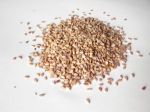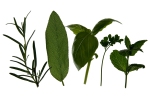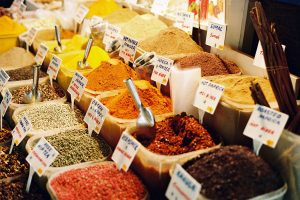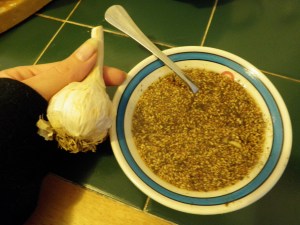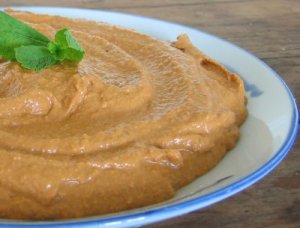
Harissa sauce, or paste, can range in color from relatively light, like my orangey spread, to a much deeper red.
My homemade harissa is a fast, simple, saucy paste of red peppers, walnuts, garlic, and any number of optional spices. It can be as fiery or as mild as you wish, but it tastes fantastic pretty much any way you put it together. It’s a super flexible recipe, so ingredient amounts don’t have to be exact.
So where exactly does this stuff come from? Well, according to Wikipedia:
Harissa is a Tunisian hot chilli sauce commonly eaten in North Africa whose main ingredients are Piri piri chili peppers, serrano pepper or other hot chillis and olive oil. It is a standard ingredient of North African cuisine,[1] most closely associated with Tunisia and Algeria[2] but recently also making inroads in Morocco according to food expert Paula Wolfert.[3]
Recipes for harissa vary according to the household and region. Variations can include the addition of cumin, red peppers, garlic, coriander, and lemon juice. In Saharan regions, harissa can have a smoky flavor. Prepared harissa is also sold in tubes, jars, and cans.
I have a feeling this versatile sauce, which can be used as a dip, condiment, pasta sauce, soup topper, meat marinade, and more, will make an appearance at my upcoming Upstate New York Yoga retreat. I’m so excited about the retreat. I’m planning all sorts of fun activities, like a meal made on the grill, a farm tour, and lots of great Yoga classes and downtime.
Looking for a more immediate use of harissa? It’s a key part of another my North African-influenced sweet potato stew.
Harissa Sauce
Ingredients
- 1 jar roasted red bell peppers
- 1/4 cup walnuts
- 2 Tablespoons olive oil
- 3-5 garlic cloves, peeled and quartered
- Pinch of cayenne pepper (you decide how big or small)
- 1/2 teaspoon each (or more) of any or all of the following: cumin, coriander, caraway seeds, cardamom, allspice
- Salt and pepper to taste
Directions
1. Rinse and drain jarred bell peppers.
2. Put all ingredients in a blender and blend until smooth, adding a bit of water if needed to get/keep things moving.
3. Taste and add salt and pepper to taste, if desired. Add more of the other spices if you wish. Re-blend. Taste, and serve immediately, or jar it in an airtight container and put it in the fridge.


